Heather Blume and Lise Motherwell are teaching “Creativity and Connection During Covid-19,” an online workshop via the Provincetown Art Association and Museum, Thursdays beginning January 14th, from 4 to 5:30 p.m. “Each week we will provide different prompts for you to create art and then share both the work and the stories that inspired them,” write Blume and Motherwell in the course description. Registration is $125 at paam.org.
Provincetown Art Association and Museum
Drop a Line
There are two drop-off days for the Provincetown Art Association and Museum’s Members’ Juried Exhibition: Monday, January 11th, and Tuesday, January 12th, from 11 a.m. to 2 p.m. Learn the rules at paam.org.
Drop a Line
There are two drop-off days for the Provincetown Art Association and Museum’s Members’ Juried Exhibition: Monday, January 11th, and Tuesday, January 12th, from 11 a.m. to 2 p.m. Learn the rules at paam.org.
Global Scope
There are two online classes at the Provincetown Art Association and Museum this week. The first, “Provincetown and Beyond: Looking at Art Around the World” with M.J. Levy Dickson, takes place on Saturdays, beginning January 9th, from 10 to 11 a.m. Registration is $150 at paam.org. The second is a figure drawing class, in the tradition of Hofmann’s push/pull theory, with Laura Shabott. There is one session on Monday, January 11th, from 9:30 a.m. to 1:30 p.m. Registration is $115.
Go Figure
Laura Shabott is teaching an online workshop, “Creating Volume and Monumentality Through the Figure,” via the Provincetown Art Association and Museum, on Saturday, December 19th, from 10 a.m. to 2 p.m. Registration is $150 at paam.org.
Paint With Pete
Pete Hocking is teaching an online workshop, “Painting Between Place and Memory,” via the Provincetown Art Association and Museum. It will take place on two consecutive Saturdays, November 28th and December 5th, 11 a.m. to 5 p.m. Hocking suggests in the course description, “Direct, spontaneous picture making (painting, drawing, photography) allows a painter to capture something ephemeral and unexpected.” Registration is $300 at paam.org.
Paint With Pete
Pete Hocking is teaching an online workshop, “Painting Between Place and Memory,” via the Provincetown Art Association and Museum. It will take place on two consecutive Saturdays, November 28th and December 5th, 11 a.m. to 5 p.m. Hocking suggests in the course description, “Direct, spontaneous picture making (painting, drawing, photography) allows a painter to capture something ephemeral and unexpected.” Registration is $300 at paam.org.
Think Small
The Provincetown Art Association and Museum will have two drop-off days for its “Members’ Open: Small Works” exhibition: Monday, November 9th, and Tuesday, November 10th, from 11 a.m. to 2 p.m. at 460 Commercial St. Work (including frames) must not exceed 20 inches in any dimension and be ready to hang. Further details are at paam.org.
Think Small
The Provincetown Art Association and Museum will have two drop-off days for its “Members’ Open: Small Works” exhibition: Monday, November 9th, and Tuesday, November 10th, from 11 a.m. to 2 p.m. at 460 Commercial St. Work (including frames) must not exceed 20 inches in any dimension and be ready to hang. Further details are at paam.org.
Behind the Scenes
Local painter Pete Hocking is teaching a course via Zoom, “Visual Research and Painting From Source Material,” hosted by the Provincetown Art Association and Museum. It will take place on two Saturdays, October 24th and October 31st from 11 a.m. to 5 p.m. Registration is $300 at paam.org.
Behind the Scenes
Local painter Pete Hocking is teaching a course via Zoom, “Visual Research and Painting From Source Material,” hosted by the Provincetown Art Association and Museum. It will take place on two Saturdays, October 24th and October 31st from 11 a.m. to 5 p.m. Registration is $300 at paam.org.
Master Class
Provincetown Art Association and Museum CEO Christine McCarthy is giving a lecture on Edward Hopper and Alvin Ross on Monday, October 19th, 10 a.m. at 460 Commercial St. Registration is $50 at paam.org.
AN APPRECIATION
Assemblage Artist Varujan Boghosian, 94, Was a Magician and Poet
He inspired peers and art lovers with ‘wisdom through humor’
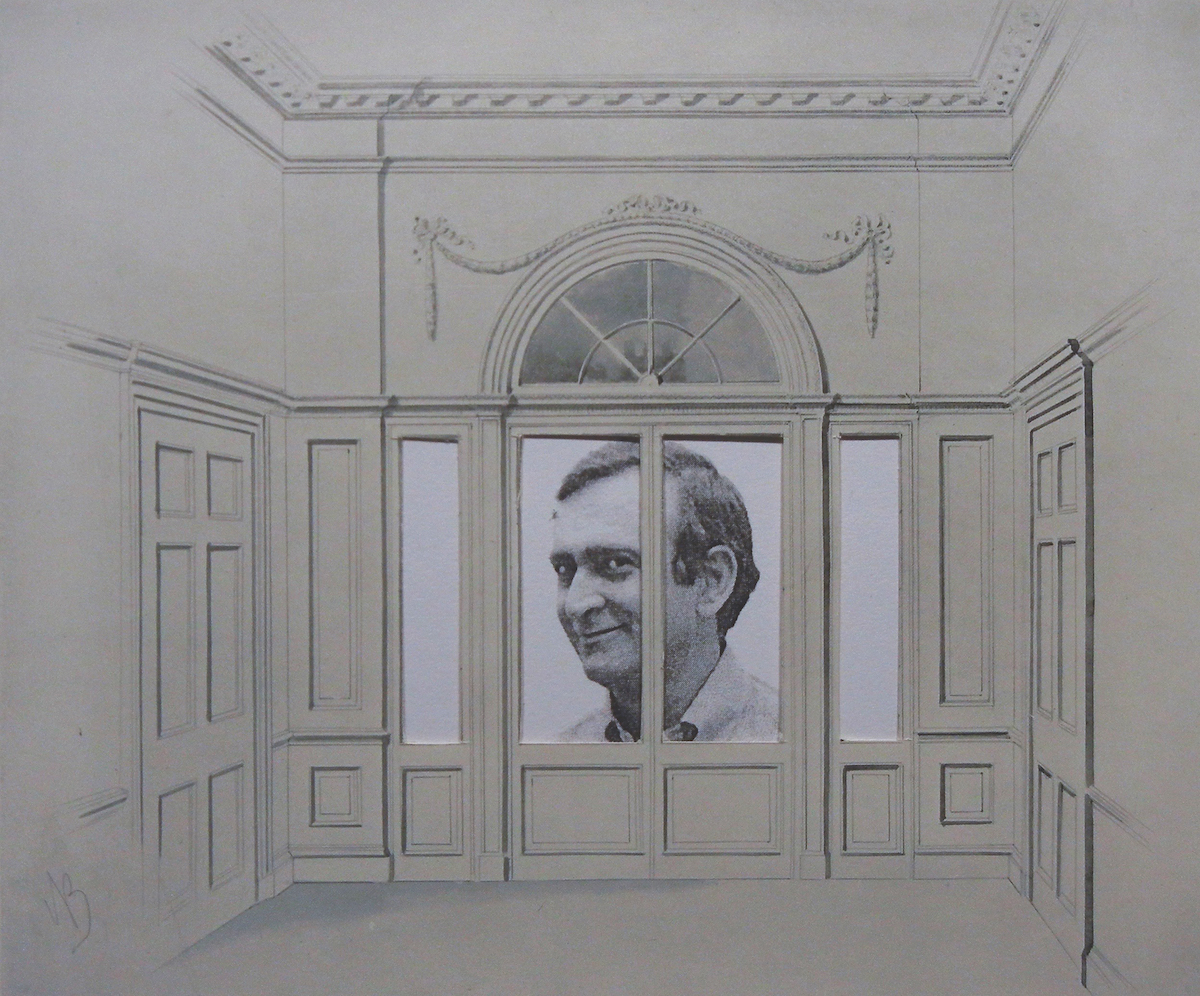
PROVINCETOWN — In his poem “Chariot,” Stanley Kunitz, a founder of the Fine Arts Work Center, wrote of Varujan Boghosian, “In my friend’s studio, where curiosity runs the shop, and you can almost smell the nostalgic dust settling on the junk of lost mythologies, the artist himself stays out of view. Yet anyone could guess this is the magician’s place….”
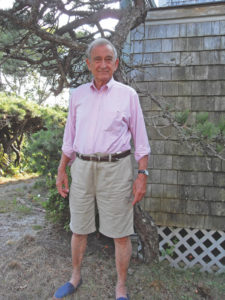
In the New York Times, the critic John Russell described Boghosian’s art as “wry, ambiguous, and lasting poetry.”
Boghosian was admired by poets, and the feeling was mutual. Berta Walker, his longtime gallerist, compared his found object assemblages to haiku: “Look at his studio — he has massive things around. With all that, what he’d pick is like two notes of music: with those two notes, you know where it’s going. That’s the haiku five-seven-five of his collages. He puts things together in two notes and makes a world.”
On Sept. 21, 2020, Provincetown lost another great contributor to its art colony legacy. Varujan Yegan Boghosian, 94, died at his home in Hanover, N.H.
He was born on June 26, 1926, in New Britain, Conn., to Mesrop and Baidzar (Sylandjian) Boghosian, Armenian refugees who fled Turkey in 1918 after the fall of the Ottoman Empire and the genocide of Armenians that followed.
“Bugsy grew up in a factory town,” said his closest friend, artist Edward Giobbi, referring to Boghosian by the nickname many of his old friends used. “He wanted to be an artist all his life.” After the U.S. entered World War II in 1941, “He volunteered for the Navy,” Giobbi said. “I met him after we left the service. We went to the Vesper George School of Art, on the G.I. Bill.”
Boghosian got his M.F.A. at Yale University, where he studied with Josef Albers. He traveled to Italy as a Fulbright scholar for painting in 1953, and, in 1966, he was artist-in-residence at the American Academy in Rome. He returned to the Academy in 1985 as a Guggenheim fellow.
He loved to teach, which he did at Yale and the University of Florida, Cooper Union, Pratt Institute, Brown University, and, lastly, Dartmouth College, where he became the endowed George Frederick Jewett professor of art in 1982. In 1995, he retired from Dartmouth and focused solely on his own creative work.
“We went to Provincetown in 1948,” Giobbi said. “He worked as a waiter at Ciro & Sal’s. He didn’t have any of the bad qualities that young artists had. He wasn’t pretentious; he wasn’t bombastic; he just did his thing. He was a fantastically gifted person.”
Giobbi told the Independent that in an anatomy class at Vesper, he saw his friend Bugsy drawing in ink with his back turned to the nude model, looking away: “The teacher came over and said, ‘Mr. Boghosian, you put the gluteus maximus in the wrong place!’ Bugsy just smiled.”
In Provincetown, he was close friends with Salvatore Del Deo and Paul Resika and a founder of the prestigious Long Point Gallery, where he showed his work alongside such major players as Robert Motherwell and Budd Hopkins. Boghosian bought a home here in the 1960s, where he and his family would spend their summers.
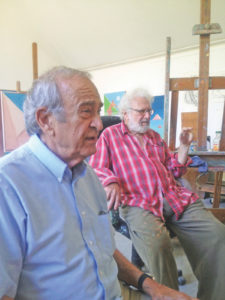
“No one hung a show as well as Bugsy,” Giobbi said. “He hung shows with Leo Manso at the Long Point Gallery. It was just like the way he would make one of his beautiful pieces — he always eliminated unnecessary work. He was tough.” Walker agreed. “As Paul [Resika] said, he had a perfect eye. He knew where to put it. It just worked. Paul wouldn’t rest easy until Bugsy assured him that a show looked good.”
Boghosian’s work is in the collections of the Metropolitan Museum of Art, the Museum of Modern Art, the Whitney Museum of American Art, the New York Public Library, the Brooklyn Museum, and the Provincetown Art Association and Museum, among others. He has had more than 75 solo shows — in Provincetown, where he is represented by the Berta Walker Gallery, in New York, and in museums throughout the world.
Boghosian was married to Marilyn Cummins from 1953 until her death in 2007. His younger sister, Hasmig Boghosian Sillano, died in 2002. He is survived by his only child, Heidi Elizabeth Boghosian, a New York City attorney and writer.
Tributes may be sent to the Fine Arts Work Center in Provincetown, where a fund is being set up for a fellowship in Varujan Boghosian’s name. A memorial service will be held in the spring, date to be announced.
Twenty of his pieces are now on view at the Berta Walker Gallery, for a show on the theme of freedom for Provincetown 400 that opened just before he died. “I knew he was really ill,” Walker said. “We’d been trying to get him to come, but he was too weak. The work is in a room I call Bugsy’s room. Because that was his space.”
Walker said his spirit is still very present: “The perfect portrait of him is of a clown carrying a huge heart forward. And that was him. Wisdom through humor.”
EXHIBITIONS
Mimi Gross Reframes the Mayflower Story
Her PAAM installation depicts the Pilgrims’ arrival from the Wampanoags’ point of view
“It’s historical; it’s interactive; you walk through it,” Mimi Gross says. She is describing how museum-goers will experience The Arrival, 1620, her site-specific installation that is opening on Friday, Oct. 2, at the Provincetown Art Association and Museum. Theatrical staging leads viewers through scenes representing the first contact between the indigenous people who farmed the Outer Cape for eons and the Pilgrims who were escaping religious persecution — and carrying muskets.
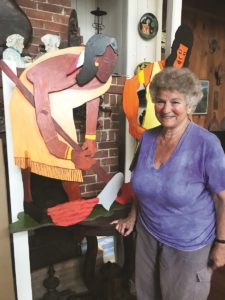
“You’ll walk through the gallery, passing the figures, and then, there’s the Mayflower, crashing from the wall,” Gross says. “The Wampanoag people were planting, cooking, and fishing, standing around, when, suddenly — this shock.”
Gross, the daughter of sculptor Chaim Gross and Renee Gross, was a young girl when her family bought their hilltop home in Provincetown’s West End, which was built by painter George Elmer Browne, founder of the West End School of Art. Its spacious, windowed studio is now Mimi’s seasonal retreat. She spoke as the numerous life-size figures that she first sketched, made into maquettes, then shaped in plywood, and painted in her exuberant style were readied for their installation at PAAM, where Gross first exhibited a painting at age 16.
A precocious artist while still a student at Bard College, Gross was invited to show in Provincetown’s legendary Sun Gallery, a mecca for painters working in a loosely gestural, figurative style. Considered risqué in its time, the Sun was censored by local officials for the nudes it included in an exhibit.
“I loved the people who showed there,” Gross says. “I was just a teenager, and happy to be participating. It was the first gallery where I showed, in Provincetown or anywhere.” Red Grooms also showed at the Sun. They married, traveled together, and have a daughter, Saskia Grooms. Collaborators from 1960 to 1976, Gross and Grooms famously created Ruckus Manhattan, a circus-like installation dramatizing the hubbub of the times.
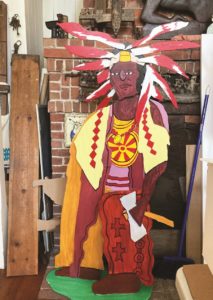
At age 80, Gross has a résumé that lists filmmaker, sculptor, painter, and educator, as well as set and costume designer for the Douglas Dunn dance troupe, for which Gross continues to explore movement and rhythm. She also creates low-relief group portraits that read as dimensional paintings. The Arrival, she says, is her most technically advanced, multi-dimensional piece.
Gross is also a habitué of Herring Cove Beach. For as long as she can recall, she sketched there, with her father and with friends. “I recently did a lot of dimensional pieces, made of wood, based on those beach sketches,” she says. They were shown at the Brooklyn Museum as part of the exhibit “Coney Island: Visions of an American Dreamland.” Gross arranged her almost two dozen multi-racial figures in congenial groups that filled 36 square feet.
“Pieces for The Arrival are more sculptural,” Gross says. Some figures are five feet high and four feet wide. Attached to a base, they appear even taller and are painted on both sides. “These are a lot more varied than the work I did for the Coney Island show,” she says.
The journey leading to The Arrival began three years ago, when Breon Dunigan, sculptor and member of PAAM’s exhibition committee, met Gross at Herring Cove. “It was late September, and Mimi was swimming,” Dunigan says. “I knew who she was. We have friends in common, but I didn’t really know her work.” Gross invited Dunigan to visit her studio that very afternoon.
Dunigan was immediately smitten. She proposed a show of Gross’s work to PAAM, its exact nature undetermined. As 2020 loomed, Christine McCarthy, PAAM’s CEO, was looking for an exhibition marking the arrival of the Mayflower.
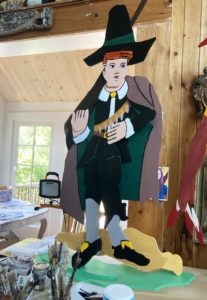
“It was totally up to Mimi,” Dunigan says of the Mayflower idea. “I didn’t want her to do anything she wasn’t comfortable with. But I did think it would be amazing, and I was right.” Dunigan laughs. When it was time to collect the artwork from Gross’s Manhattan studio, she drove a large van to the city with her son, Liam Bailey, during a rainstorm. They assisted with wrapping the delicate cargo and transported it to the Cape.
The finished pieces went to PAAM, and others, in various stages of completion, went to Gross’s hilltop workspace. Gross’s skill in portrait painting, and the historical research underpinning the installation, is everywhere evident: figures are individualized, assigned a personality. Dark-skinned Wampanoag men are painted in reds and yellows. Garments and accessories are never purely functional: a love of pattern and bright color is reflected in feathered headdresses, shields, and neck ornaments. Women till the land, their hair neatly braided and deerskin dresses fringed. A black-hatted Pilgrim, in knickers and buckled shoes, carries a musket. His smile is tentative, as if asking what comes next.
McCarthy made her own pilgrimage to Gross’s studio. “Mimi’s narrative is crafted through the lens of supporting the Wampanoag people, challenging the history books, and bringing a new awareness to something that happened 400 years ago,” McCarthy says. “Each figure has its own personality, and seeing them in real life, as opposed to digital images, is astounding. The message delivered through the installation will go way beyond the actual artwork.”
The daughter of an immigrant artist who made a home in Provincetown, Gross provides a complex, contemporary interpretation of the Outer Cape’s — and the country’s — foundational history. “These peaceful people had been living here for thousands of years, and along came others looking for their own freedom, who couldn’t have cared less about those here already,” Gross says, giving voice to a narrative, through dimension, color, and gesture, of a people whose descendants continue to be silenced.

Culture Clash
The event: “Mimi Gross: The Arrival, 1620,” a site-specific installation
The time: Friday, Oct. 2, through Nov. 29; Wednesday through Sunday, 11 a.m. to 5 p.m.; time-slot reservations required at paam.org
The place: Provincetown Art Association and Museum, 460 Commercial St.
The cost: $12.50; members free
Reporting for this article was supported by a grant from the Provincetown Cultural Council, a local agency supported by the Mass. Cultural Council.
Cut and Paste
Sarah Kahn is teaching a virtual collage workshop via the Provincetown Art Association and Museum on Tuesdays, January 5th through February 9th, from 4 to 6 p.m. “By texturing, glazing, and drawing, you will learn how to create dazzling papers that can be used in mixed media pieces as collaged passages,” writes Kahn in the course description. Registration is $400 at paam.org.
